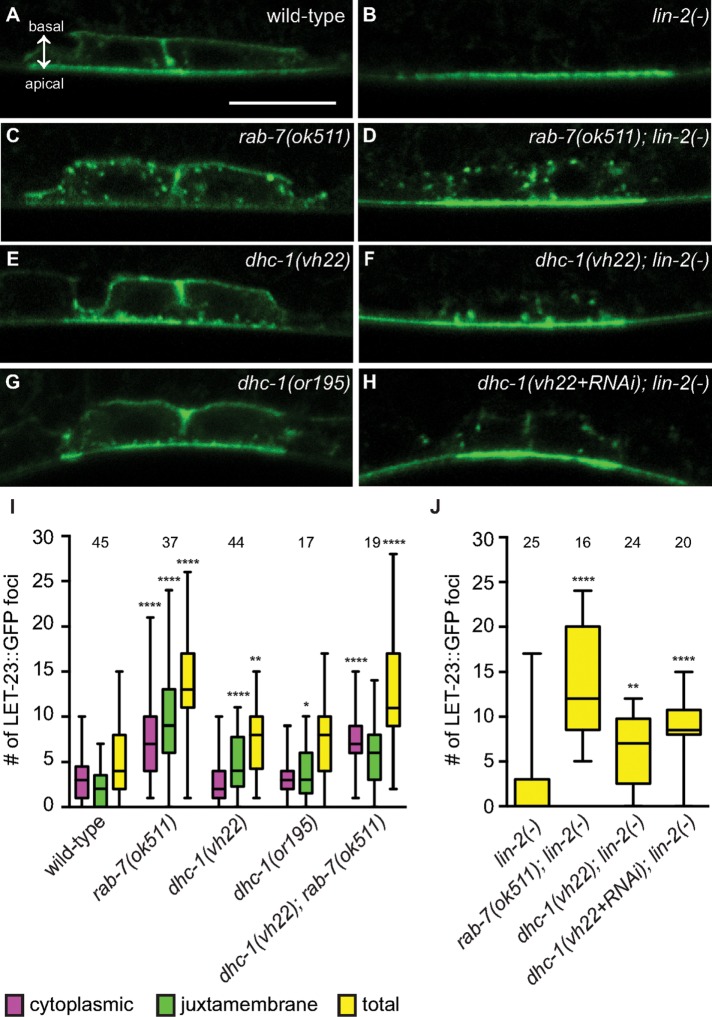FIGURE 3:
DHC-1 and RAB-7 differentially regulate LET-23 EGFR trafficking. (A–H) Representative confocal images of LET-23::GFP localization in the P6.p daughter cells—P6.pa and P6.pp—of zhIs038 transgene-carrying animals. The receptor is localized to both basolateral and apical membranes of wild-type animals (A) but is restricted to the apical membrane in lin-2(e1309) animals (B). rab-7(ok511) and dhc-1(vh22) mutants accumulate LET-23::GFP in the punctate structures within the vulval cells (C, D) and adjacent to the plasma membrane (E, F), respectively, in both wild-type (C, E) and lin-2(e1309) backgrounds. (G) dhc-1(or195) mutants also accumulate LET-23::GFP foci at 25°C. (H) dhc-1(RNAi) does not significantly change the dhc-1(vh22); lin-2(e1309) phenotype. (I, J) Box-and-whiskers plots of the number of LET-23::GFP foci in the P6.p descendants for the indicated genotypes. The number of animals scored is indicated above. (I) Number of cytoplasmic (pink), juxtamembrane (green), and combined total (yellow) LET-23::GFP foci. For statistical analysis, the average number of foci in the rab-7(ok511), dhc-1(vh22), and dhc-1(or195) mutants was compared with wild type. The dhc-1(vh22); rab-7(ok511) double was compared with the dhc-1(vh22) mutant and was not significantly different from rab-7(ok511). (J) Total number of LET-23::GFP foci. All double mutants were compared with lin-2(e1309). dhc-1(vh22+RNAi); lin-2(-) was not statistically different from dhc-1(vh22); lin-2(-). A two-tailed t test was used to calculate statistical significance (*p < 0.05, **p < 0.01, ****p < 0.0001). Basal and apical membranes are facing in the same direction in all of the images and are indicated in A. Bar, 5 μm.

